Imagine: you are sitting at a desk with a screen in front of you. What is the width of the screen? Is it flat or curved? Does it have a glossy screen or a matte coating?
Whatever screen your imagination has conjured up, it probably doesn’t look like LG’s 28-inch DualUp. The Korean manufacturer has carved out a good place for itself in the monitor market over the past decade, with its ultra-thin range offering the screens of choice for many professionals, while the UltraGear brand caters to gamers. The DualUp, with its unusual 16:18 aspect ratio, charts its own course – a course that attempts to redefine the way one interacts with a computer screen.

LG DualUp 28″ – Best prices:
 Fnac marketplace
Fnac marketplace691.46
 Amazon Marketplace
Amazon Marketplace719.58
 Amazon
Amazon724.19
 Darty Marketplace
Darty Marketplace764.09
I’ve been using said monitor for the past few weeks, continuing my daily routine of writing, editing, and research, all while adjusting to what feels like a familiar, yet untapped dimension of computing. I admit it: I don’t think I’ll be back to a traditional screen anytime soon.
Features
- Dimensions: 48.15 x 84.32 x 46.13 cm (without stand)
- Screen : 27.6-inch IPS (2560 x 2880) @ 60Hz
- Assembly : VESA
- Ports: DisplayPort 1.4, USB-C, USB-AB audio jack, 2x USB-A, 2x HDMI
- Price : 724 €
Design
There’s no denying it: the LG DualUp isn’t a traditional ultrawide monitor. Instead of stretching across the table, LG’s 16:18 aspect ratio takes up less horizontal space and therefore doesn’t require you to turn your head to see each of your windows. .
The matte coating of the DualUp makes it very pleasant to use, even when the sun is beating down on the screen. The monitor also does not catch fingerprints.
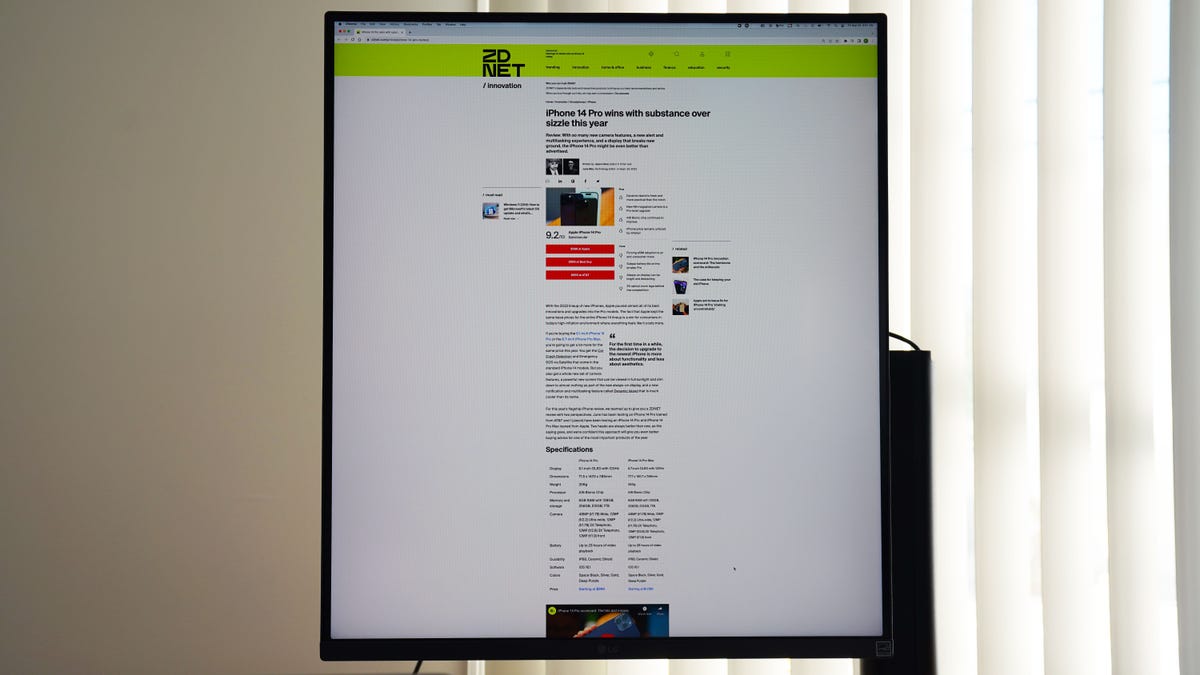
Image: June Wan/ZDNET.
That said, while the monitor is bright enough for most uses, peaking at 300 nits, there are times when the brightness sensor will err and set the brightness too high or too low. That shouldn’t be a problem if you’re working in a space with constant lighting.
Before talking about the benefits of this screen ratio, let me start with the basics first. The build quality of the DualUp leaves something to be desired. Much of the monitor is made of lightweight, flimsy plastic, which feels cheap, but makes it easy to move around. The DualUp has built-in speakers, which isn’t all that common for displays at this price point. A settings button, located at the bottom (or on the right side if you rotate the monitor 90 degrees), allows you to navigate through the different display options.
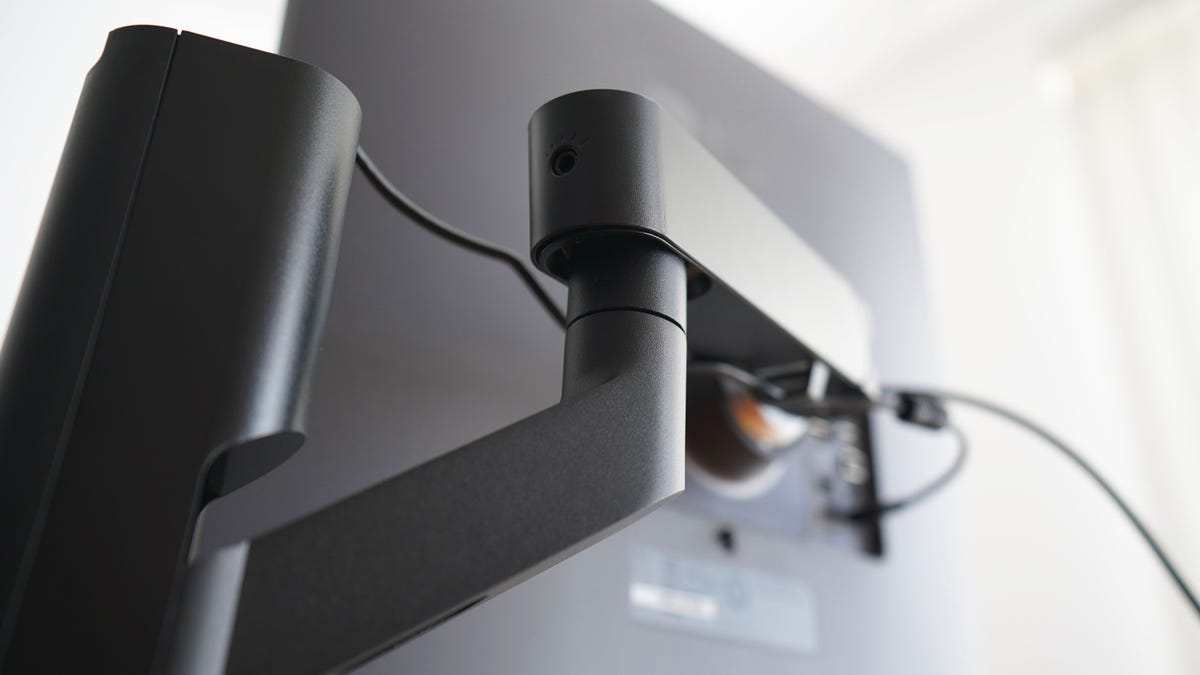
Image: June Wan/ZDNET.
LG’s Ergo Stand connects to the monitor via a VESA hook and allows you to place the screen in all possible and imaginable positions… if you have the space. It attaches securely to virtually any desk with its clamp-style system. Plus, it’s built to conceal dangling cables.
There is also a plethora of ports on the back to accommodate all possible configurations. The single USB-C (Power Delivery) port was all I needed to connect (and extend) my MacBook Pro display, while charging it with the 80W output. USB-A ports and HDMI are also available and will be useful if you want to pair two devices to the same monitor. For example, you can plug in a Nintendo Switch to play on the lower half of the screen, while a computer screen can be displayed on the upper part (to manage a livestream for example). After all, it’s a 16:18 screen, which means it’s technically possible to simulate a 21.5-inch dual screen in 16:9 format (as if two monitors were stacked on top of each other). the other).
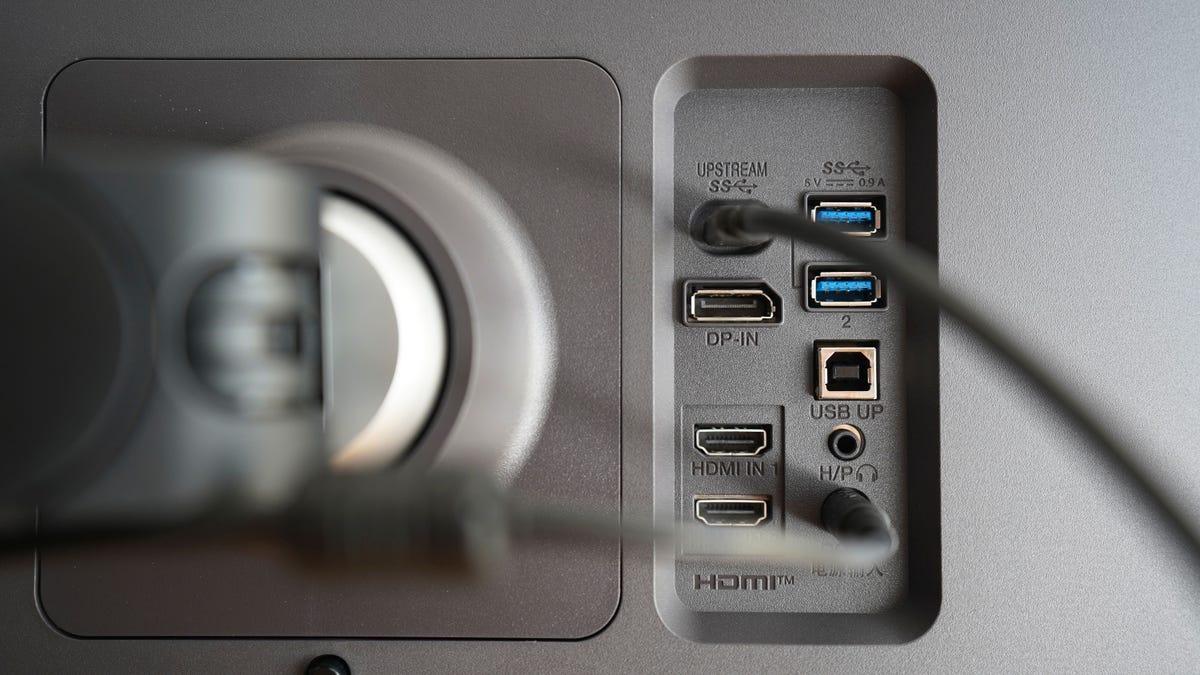
Image: June Wan/ZDNET.
Performance
There really isn’t a “right way” to use a 16:18 screen. It’s up to you to launch your software and move your tabs until you find the arrangement that suits you best.
My favorite working environment consists of a browser tab on the right side and two other stacked windows on the left – one for browsing and the other for playing music and videos. With a screen this high, it’s possible to see an entire blog post without having to scroll through the content. This is very useful for writing and proofreading articles as well as getting an overview of the structure and appearance of the paper. It’s quite refreshing to be able to see so much information without having to move your head.
The DualUp display is also perfect for browsing spreadsheets, developing and coding, and even editing videos. In short, it’s an awesome display for vertical content consumption.
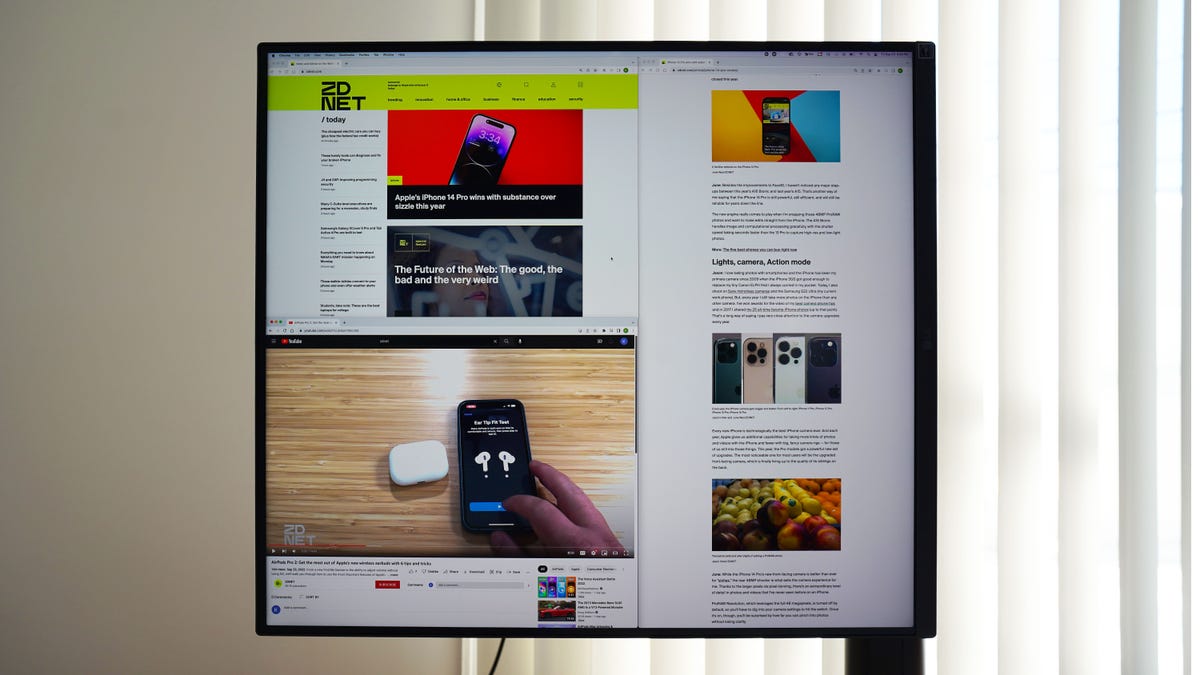
Image: June Wan/ZDNET.
As nice as the monitor is, the one area the DualUp falls short in is full-screen video playback. YouTube videos are watchable, with a healthy dose of letterboxing (black bars at the top and bottom), but if you start watching videos in 21:9 format – which is most modern movies – you’ll touch the limits of the DualUp experience.
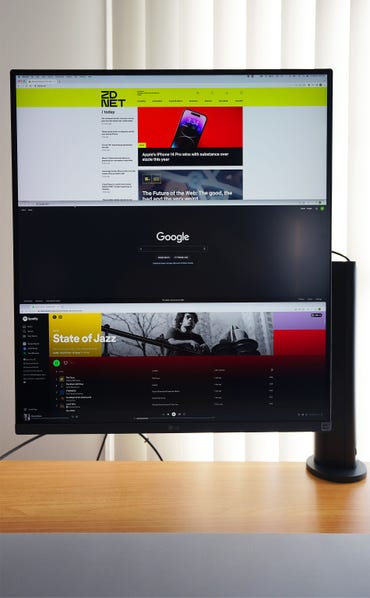
Image: June Wan/ZDNET.
I would generally avoid using only one application at a time on the monitor. There’s just too much screen real estate not to have at least two programs open at the same time. That’s the beauty of it, that screen ratio pushes you to be productive.
Last detail to address: the integrated LG software. A plug-in lets you choose between predefined window arrangements (up to eight), in case you don’t want to manually drag and resize your programs yourself. The software is easy to use and worth downloading if you want to get the most out of your 700-and-something screen.
Conclusion
There’s not much to get excited about monitors these days, but the LG DualUp changes that. It is exactly what the journalist in me was expecting.
It’s not much of a bargain compared to the 34-inch ultrawide displays flooding the market today, but the LG monitor, with its alluring 16:18 aspect ratio, can help declutter your office while placing all the information you need in front of your eyes.
Alternatives
In addition to the LG DualUp monitor, here are other solutions that will meet your giant screen needs:
Source: ZDNet.com
